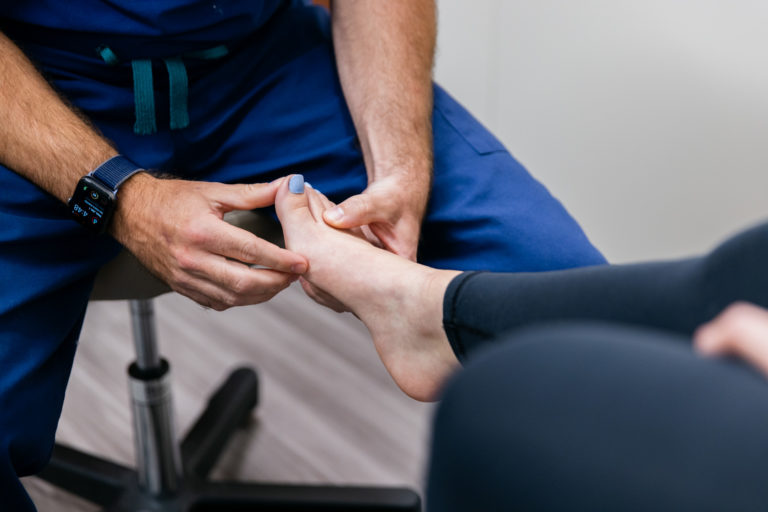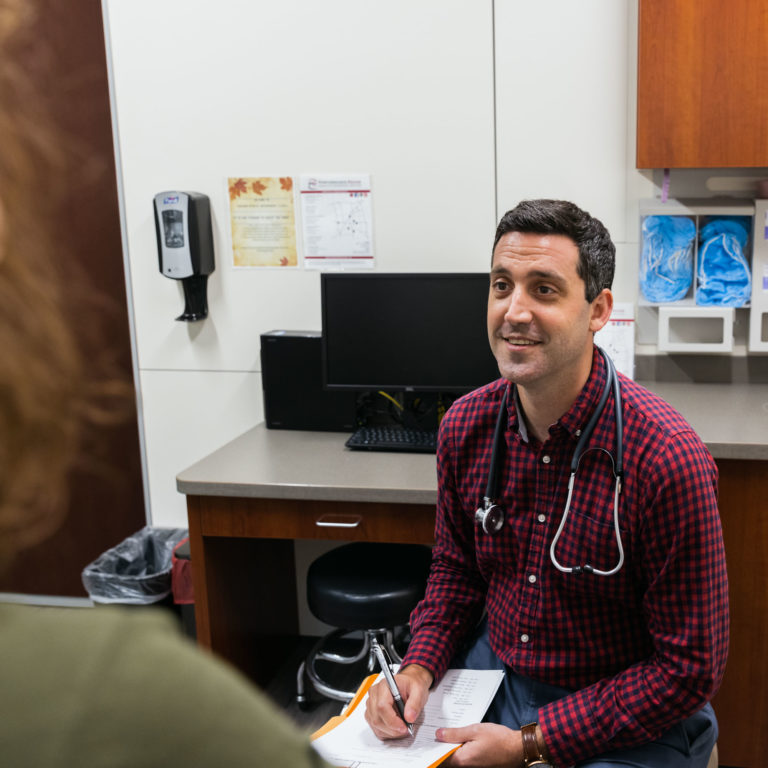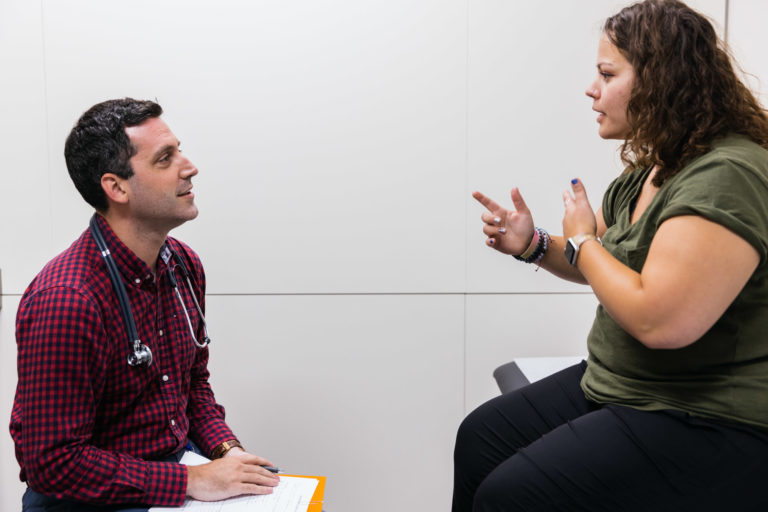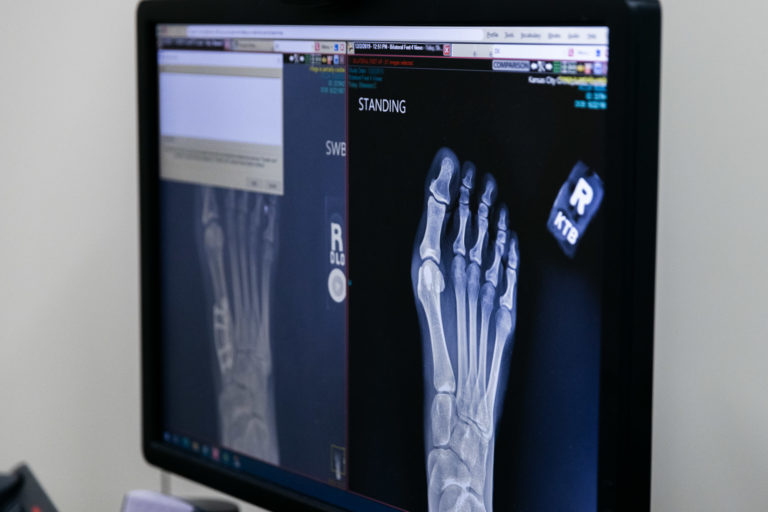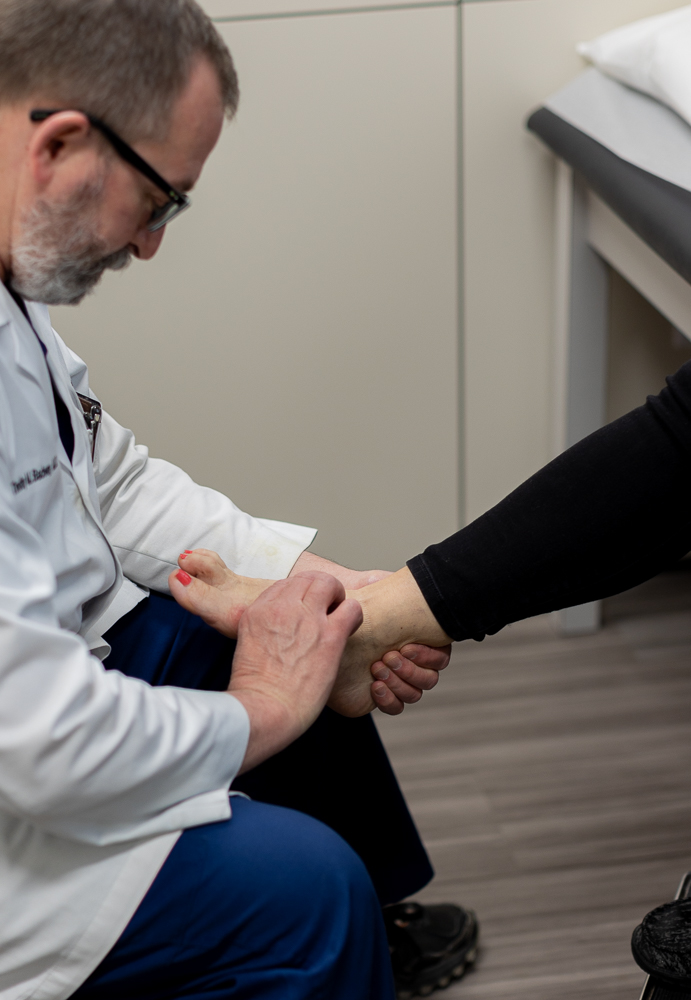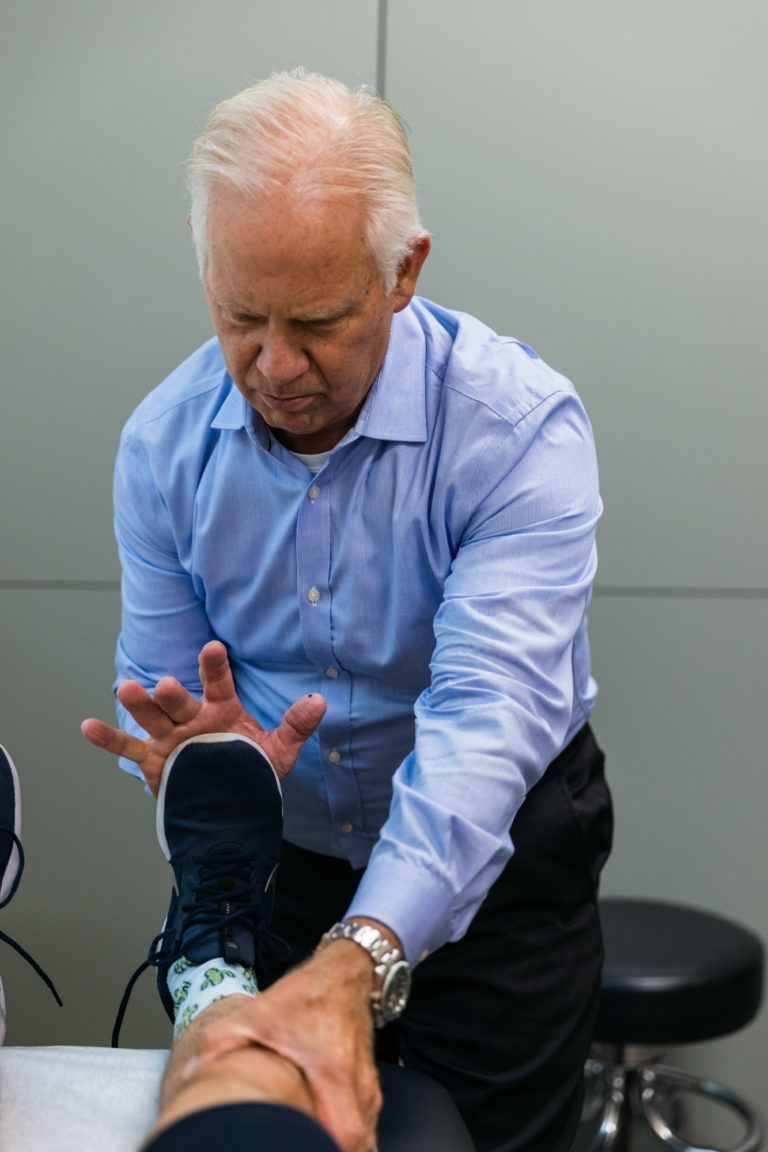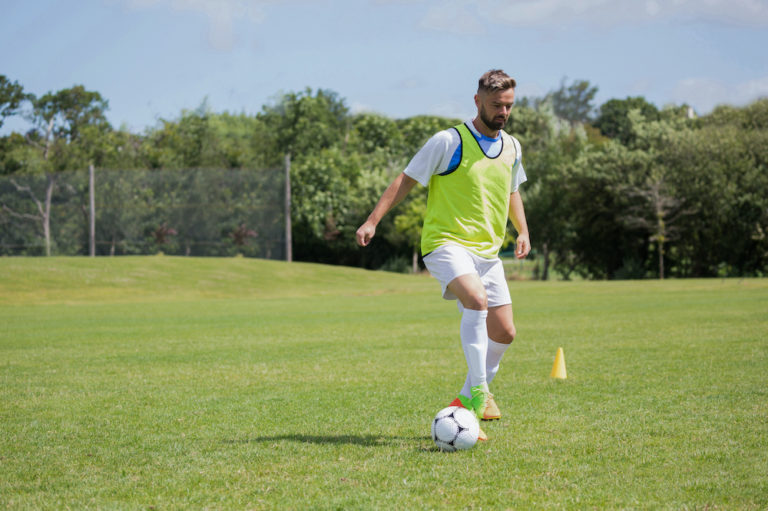Foot & Ankle Treatments in Kansas City
Minimally Invasive Foot & Ankle Management
Treat and manage your foot & ankle pain for long-term relief.
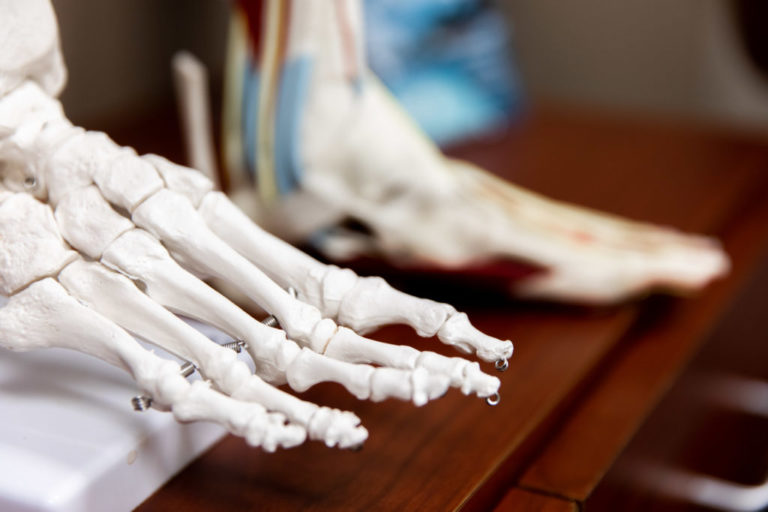
Understanding the Basics Behind Minimally Invasive Foot & Ankle Management
What is Minimally Invasive Foot & Ankle Management?
Foot and ankle problems vary in severity, but they can meaningfully impact your ability to function,live a normal life, or participate in the activities and hobbies you enjoy. There are a variety of foot or ankle problems that one can face, whether it’s a light sprain or strain or a full fracture.
With over 26 bones and 33 small joints in each foot and ankle, these issues become relatively common. When they occur, The providers at Kansas City Orthopedic Alliance are adept at finding the necessary treatments to correct the issue. Our expert orthopedic foot and ankle physicians at Kansas City Orthopedic Alliance have the knowledge required to treat numerous issues, both surgically and non-surgically.
When you visit a specialist at KCOA, we focus on creating a treatment plan based on your specific conditions, symptoms, and recovery goals.
Choosing minimally invasive foot and ankle treatments in Kansas City is a decision that typically involves guidance from your primary care doctor and orthopedic physician.
When you choose Kansas City Orthopedic Alliance, one of our highly-trained orthopedic foot and ankle specialists will conduct an initial evaluation to better understand your condition. After a complete review of your results, your provider will discuss whether lapiplasty is the best treatment option for you.
Symptoms that may require minimally invasive treatments, such as ankle arthroscopy, include:
- Reduced range of motion
- Swelling
- Weakness
- Stiffness
- Completely immobile or “locked” joint

Kansas City Orthopedic Alliance Foot & Ankle Injuries Assessment
Assessing the Injury
Determining the proper treatment for your foot or ankle injury starts with an assessment from one of our experienced providers.
You can think of foot and ankle pain as a spectrum, with some instances being more severe than others. The KCOA orthopedic specialists always focus on each patient and their concerns before creating a treatment plan.
Therefore, during your initial appointment, we will often ask questions such as:
- Does your pain currently limit you or your activities?
- Has your pain progressed or worsened recently?
- Have you experienced any tingling or numbness in your foot that makes tasks difficult?
- Did you notice or hear a popping sound at the time of your injury?
- What are your lifestyle goals?
- How has pain affected those goals?
From there, we can decide what treatment option will align best with your needs and lifestyle goals. Once we’ve completed a proper assessment, your provider will often begin with a physical examination to help determine the origin point of your pain. In some cases, advanced testing may be required for a full diagnosis.
Examination
X-Ray
Also called radiographs, an X-ray captures a picture of the foot or ankle. Orthopedic physicians may order an X-ray to rule out the possibility of a fracture (broken bone), osteoarthritis, or other bone-related conditions.
Magnetic Resonance Imaging (MRI)
MRI captures images of muscles, bones, intervertebral discs, and tendons to help provide information other tests can’t detail. During an MRI, you will lie on a table that slides into a tube-shaped scanner. The machine creates a magnetic field around you, using pulsed radio waves to form the MRI images.
Electromyograms (EMG) and Nerve Conduction Studies
Our board-certified physiatrists utilize electromyograms (EMGs) and nerve conduction studies to help determine whether nerves and muscles respond properly to stimuli. The EMG measures the electrical activity of your muscles at rest and in motion, while nerve conduction studies determine how fast and effectively your nerves and muscles receive electrical signals.
Symptoms
Common Signs and Symptoms of Foot & Ankle Injuries
With so many different parts working together in your feet and ankles, there are many potential causes of pain. And each of those causes has a unique set of symptoms.
Feet and ankle injuries often cause pain and swelling in your heel, making it difficult to walk or bend downward. In less severe cases, you may feel pain and stiffness in the heel. When a patient visits one of our KCOA offices, a skilled orthopedic specialist will ask you questions regarding your symptoms, what aggravates/alleviates your symptoms, and whether you have attempted prior therapies. Next comes a thorough physical exam. We will then review any images you bring with you and/or take new images. After determining the cause of your pain, we can discuss if the treatment will work best for your needs.
CAUSES
Common Causes of Foot & Ankle Pain
The body has different kinds of joints, and they all face different challenges. The foot and ankle combine for a complex region of the body, and the wear and tear builds up over the years. Soft tissue protects these joints and bones and is made up of muscles, tendons, ligaments, nerves, and blood vessels.
With all of these different bones in your feet and ankles, injuries and degenerative joint issues become relatively common. As the years go on, many people struggle with the effects of years of repeated movements, such as walking, running, or jumping.
Management of foot & ankle Pain
Treatment Alternatives
In most cases, surgery is not the first option for treatment at Kansas City Orthopedic Alliance. If we can treat your foot and ankle issues with more conservative treatments, we’ll choose those options. We typically exhaust all non-surgical options prior to recommending surgery. Non-surgical treatments for feet and ankle injuries include:
Physical Therapy
Movement can actually reduce pain and encourage healing in the ankle, as movement increases circulation and supplies and other nutrients that support joint health and function. Your physical therapist might also recommend a series of exercises designed to strengthen the plantar fascia, Achilles tendon, and lower leg muscles with stretching.
Medications
Your doctor may recommend over-the-counter NSAIDs (Non-steroidal anti-inflammatory drugs, such as Advil) or prescription medications. Especially with NSAIDs, you should always talk to your doctor to ensure they are the right treatment for you.
Orthotics
Another non-surgical measure that your provider may recommend is an off-the-shelf custom orthotic device. This can be a device that provides custom-fitted arch supports, which allows for more even distribution of pressure for your foot.
F.A.Q.
Frequently Asked Questions
Kansas City Orthopedic Alliance is here to help.
Our care is personal. Our team is knowledgeable. And we’re more available than ever.
With access to board-certified specialists across Kansas City, we have the tools to meet almost every musculoskeletal condition.
Our Locations
Overland Park, Kansas
10777 Nall Ave Suite 300 Overland Park, KS 66211Leawood, Kansas
3651 College Blvd. Leawood, KS 66211Kansas City, Missouri
Saint Luke's Medical Plaza #1 4320 Wornall Rd., Ste. 610 Kansas City, MO 64111Belton, Missouri
Belton Regional Campus 17067 S Outer Rd #301 Belton, MO 64012Blue Springs, Missouri
St. Mary’s Medical Center, Main Entrance 203 NW R.D. Mize Road, Suite 200 Blue Springs, MO 64014Shawnee Mission, Kansas
7450 Kessler St ste. 140 Merriam, KS 66204Prairie Star (Lenexa, Kansas)
Prairie Star 23401 Prairie Star PkwyBldg. B, Ste. 220 Lenexa, KS 66227

